|
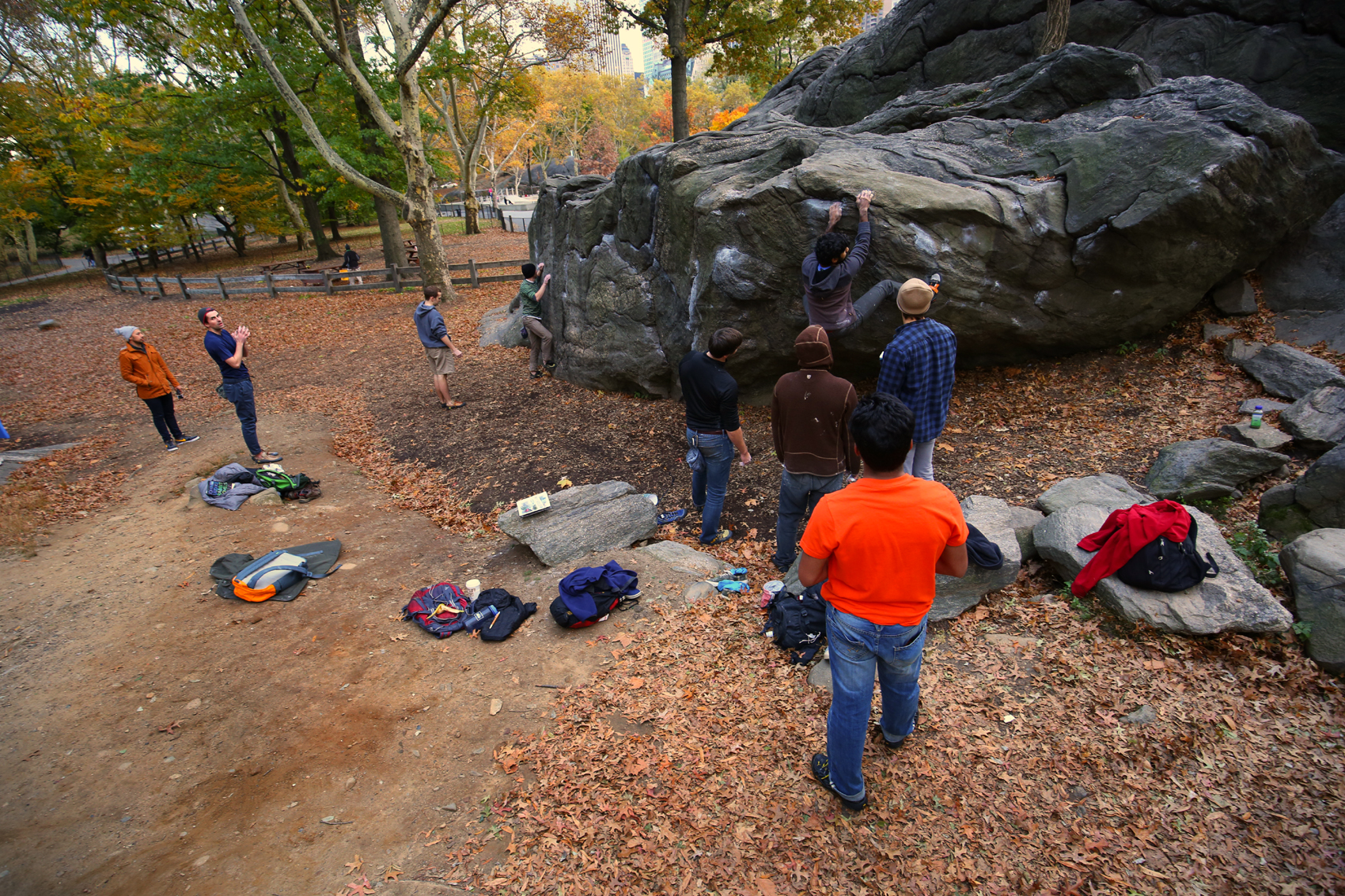
|
| Sure there's good climbing gyms in the city but sometimes it's just better to be outside. |
Rat Rock is accessed easily from either the
Columbus Circle or 7th Avenue entrance at the southwest corner of Central Park. Adjacent to the Heckscher Children's
Playground and south of the Heckscher softball fields, walk to the north or east side of the large rock formation. Officially
labeled Umpire Rock by the City Parks and Recreation Department, climbers have named it for its smaller
and more permanent residents. |
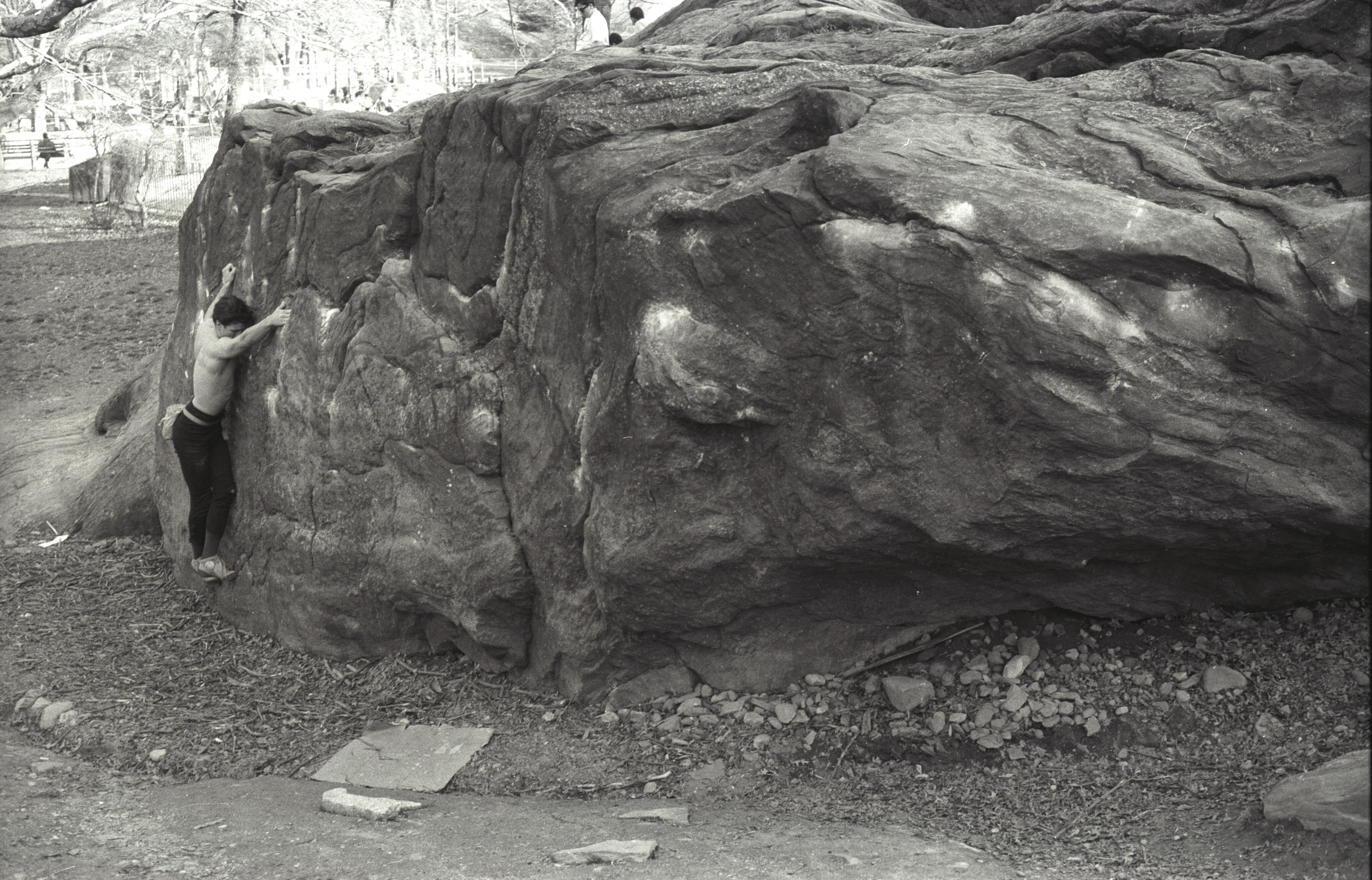
|
| John Blumenthal running laps. 1988 |
This
area, consisting of two separate faces on a very large boulder, has the most popular and some of the most difficult climbing
in Central Park. It is also an excellent meeting place for climbers. Before 1987, most local climbers had been content to repeat only the
well-established lines. At the time, only two or three individuals were capable of climbing Testpiece (referred to back them as "5.11 Direct") and then only the bottom half.
People talked of the High Traverse on
the north face, but no one did it. Only infrequently did local or visiting climbers look to new problems or attempt
a severe one. The Rat Rock scene was, in a word, quiescent. This, of course, inevitably changed. First,
there was the Japanese contingent of Yuki, Komba and Tamaki. These three were determined, passionate climbers who all
sought problems of greater difficulty and complexity, seeking to establish a level of technique in their moves that approached
artistry. Then came two relative novices, Nick Falacci and Jeff Dahlgren, who quickly became bitten by the climbing
bug and who both brought an ambitious quality to their climbing. They were the ones out at Rat Rock on 30 degree winter
days, unable to not climb for more than a few days at a time. Then came a collection of experienced and talented climbers
who had returned to the sport with renewed interest. John Blumenthal, Sandy Mah and Chris Gonzalez brought years of
refined techniqe to the mix and pushed the entire local scene to new, higher standards. Getting things
rolling, the Japanese contingent established Tweaky Shit. Soon
after, Nick Falacci managed put up Rat Patrol after
an all-day ordeal. A visiting Yosemite climber put together Ratraverse in an afternoon. Jeff Dahlgren nabbed the first known ascent of the No-Feet
variation of the Overhanging (Polish) Traverse. Sandy Mah,
a former Eldorado activist, re-established "5.11 Direct" with a new committing direct mantle finish. Jeff Dahlgren then eliminated
the big foot bulge out right from the opening moves, eliminated the prominent rail for the left hand and thus created a perfect
directissima line that was far more graceful and powerful than the original problem, bumping up the grade to V4.
John Blumethal and Nick Falacci make quick repeats of the problem and due to its more difficult nature, it reverted to its
older, simpler and original name -- Testpiece. Not long after
that, a whole contingent of lcoals including Blumenthal, Dahlgren, Falacci and David Sowerby pieced together a crimpy, technical
low traverse of the east face called Bottom Line. Eventually the moves were linked together by Blumethal and
Dahlgren. Possibly the only two climbers to have done the whole line as a key hold at the crux broke shortly after.
The Japanese contingent responded quickly with Komba putting up a wild, unlikely and futuristic problem under the overhanging
west side. Komba's Roof (aka Rat Trap) has
since seen only a small number of complete ascents since then. Rat Rock has never seen so much chalk or activity. Potential
for new problems dried up quickly. Climbers were forced to create even wilder, more contrived eliminates. Death by Dizzy, Falacci's complete traverse of the east face, was
more of an endurance and nerve test than technical boulder problem and it seemed to announce the end of this era of frantic
problem-finding. However, Rat Rock would never be the same. It never returned completely to the casual, mellow uncrowded scene
of yesteryear. New wave after new wave of strong climbers discovered its ability to delight and perplex. A contingent
of Polish climbers arrived and made the Overhanging Traverse their own, creating new beta, new variations, until they conquered
even the name of the problem: The Polish Traverse. Since then, large rocks were removed from beneath the far end
of the overhanging traverse, enabling the ability of climbers to create new problems directly under the last big block of
overhanging rock, e.g. Smack The Dragon. During all this time, Yuki, the sensei of Rat Rock continued to find
new variations were few thought they existed. A new standard of difficulty was brought to the area when another new
variation to Komba's Roof/Rat Trap was added: Sammy's Bulge V12. (This guide
prefers not to give official names to problems that include a climber's name in -- which is in keeping
with this guide's FA policy. Until Mr. Dahlman offers a new name of his own making, this guide will refer
to the problem as Belly of the Beast.) As
of this current edition of the guide in 2015, one could make the argument that Rat Rock is completely climbed out. There
are no new problems to be found. However, given what I have witnessed over the past 30 years, I would not bet my money
on that.
1. Rat Rock Traverse V0+ ** Start: At small "starter" flake
on the overhanging right side of the north face. Go: Traverse left without using the top.
Return right. The most frequently climbed problem in the park. 2. High Traverse V1 Start: Same as Rat Rock Traverse. Go: After making the opening move of Rat
Rock Traverse, move into a higher traverse, using hand holds 6" to 1 1/2' above the easier ones on Rat
Rock Traverse. 3. Low Traverse V3 Start: Same as Rat
Rock Traverse. Go: Move
immediately down a right-leaning crack just left of the starter flake. At the bottom, move left into the right-facing
flake, using only the right side of the flake. Continue left (crux) using handholds generally at chest level.
If any hold feels "good" it is probably "off-route."
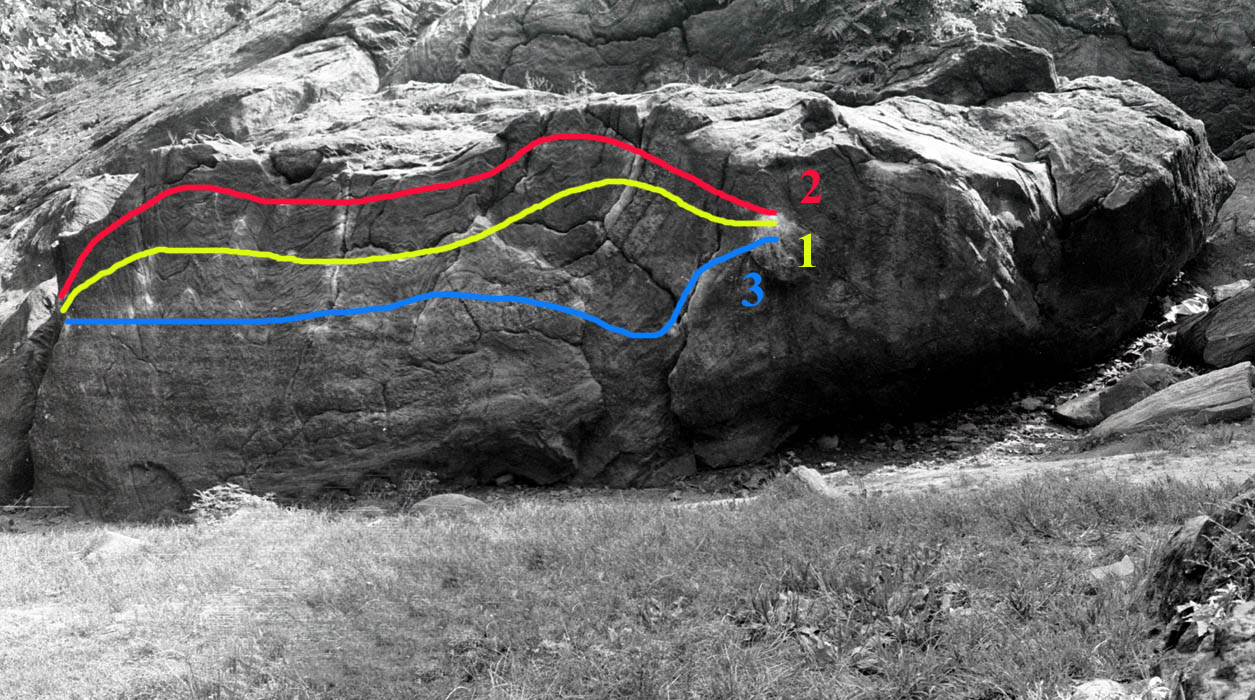 4. The Exterminator V5 * Start: At the very bottom of the right-leaning crack mentioned in the Low Traverse. Go:
Traverse left into right-facing flake staying even lower than the Low
Traverse. Match hands on the bottom of the right-facing flake, reach out left for a side pull, reset feet, snatch
the two-finger knob with the right hand, reset feet, match on side pull and continue with the same finish as Low
Traverse. 5. The Maze V3 (extremely contrived) Start: On the left side of the north face. Go: Move right to sloping side pull beneath the finger jam/slot. (Avoid the
finger jam/slot.) Bump right hand to small side pull fin just above finger jam/slot. Reset feet and
cross over to irregular crack just below the top. Move right to small finger dish. Left hand matches on side pull
part of the same hold. Right moves straight down to the bucket hold on the large middle crack. Match.
Reach right to small side pull, reset feet, cross over with left hand to good high hold just below top. Move right into
crack. Then down another shallow crack and eventually to the bottom of the large right-leaning crack, then up to starter
flake and finish with either of the traverses listed above.
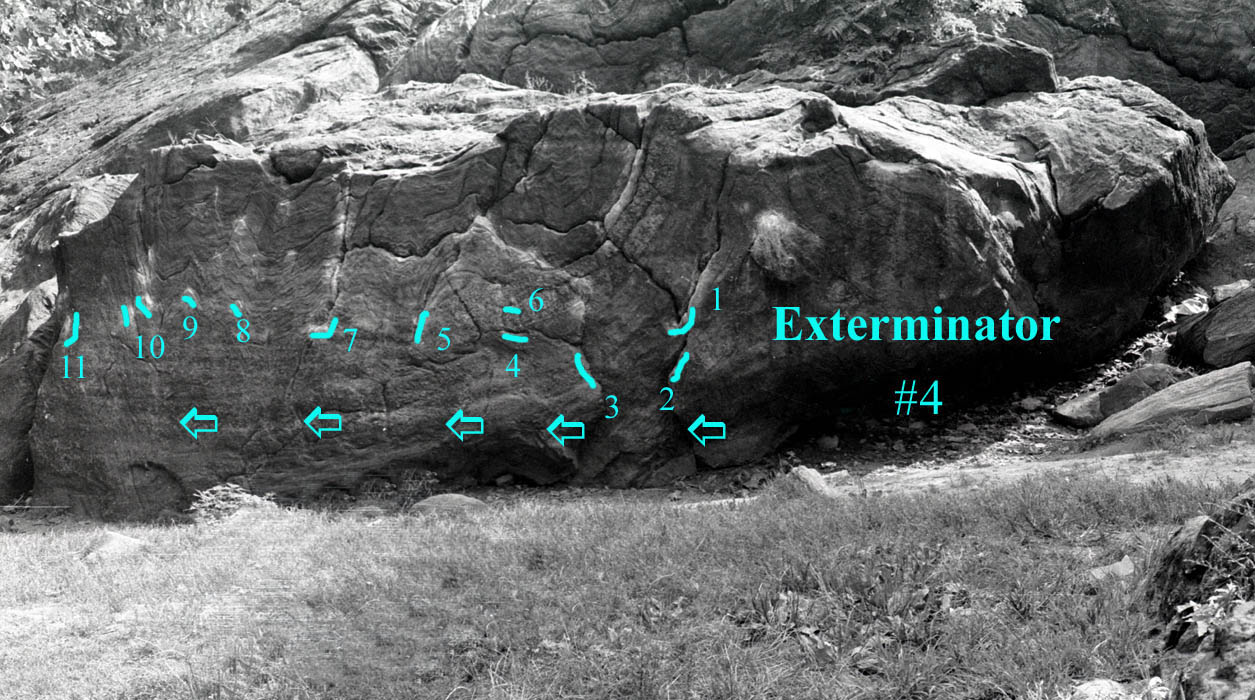 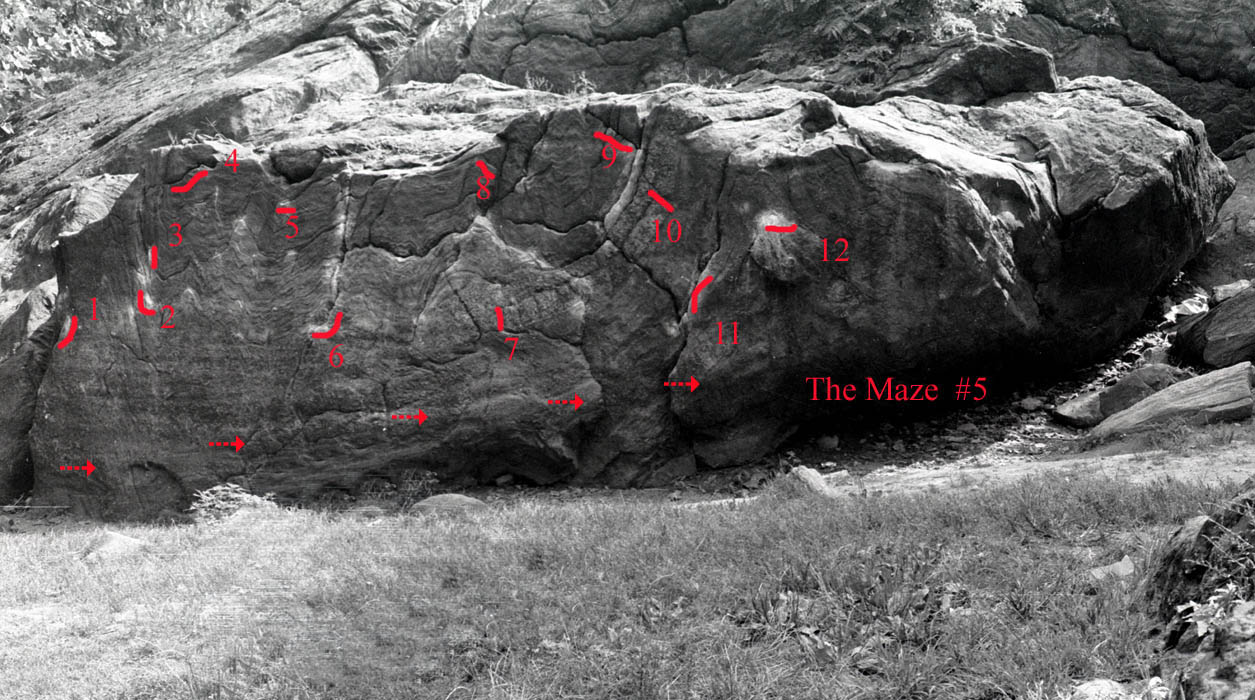
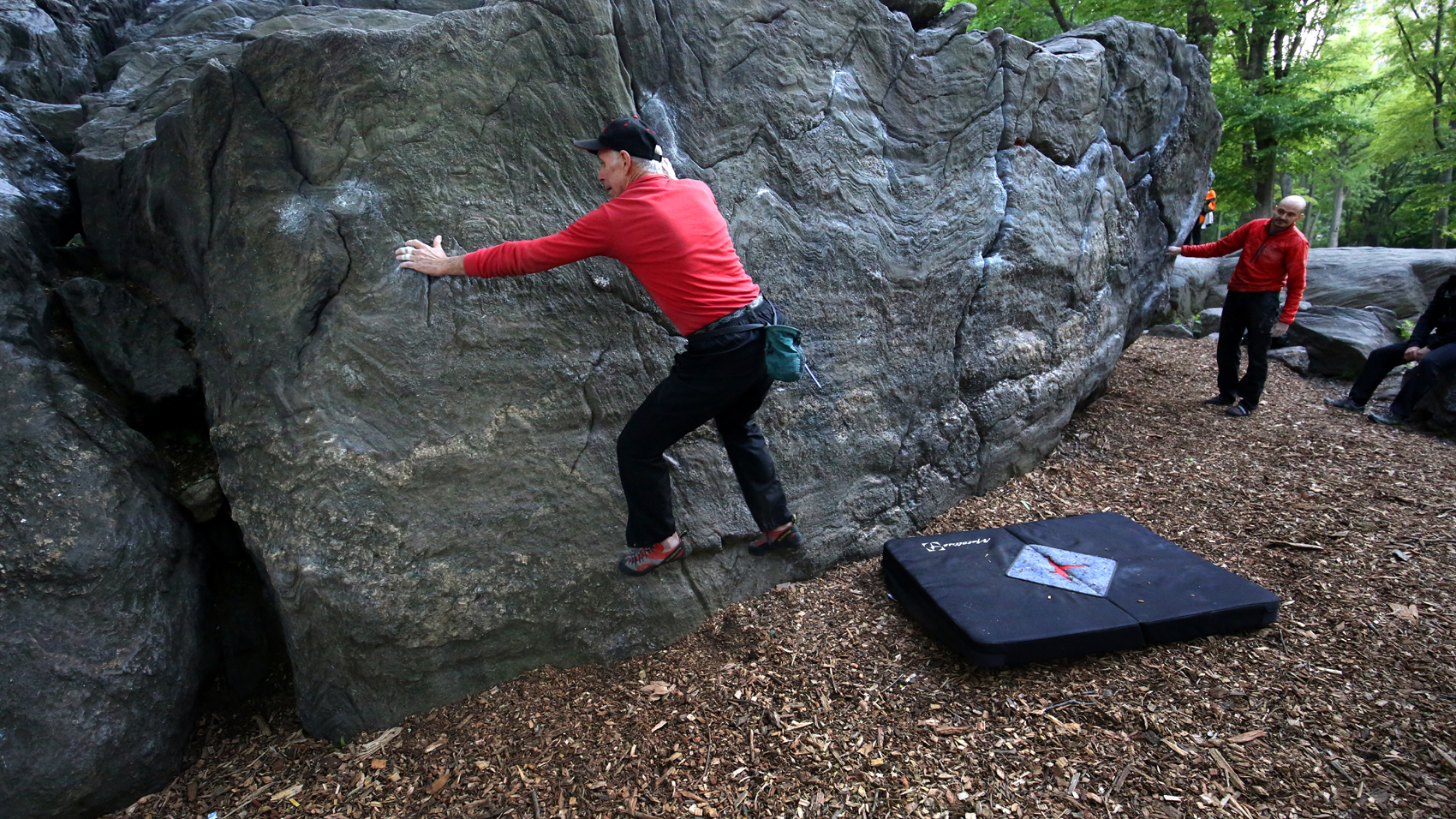
|
| Vadim Marcovallo still rocking the traverse after all these years. |
|

